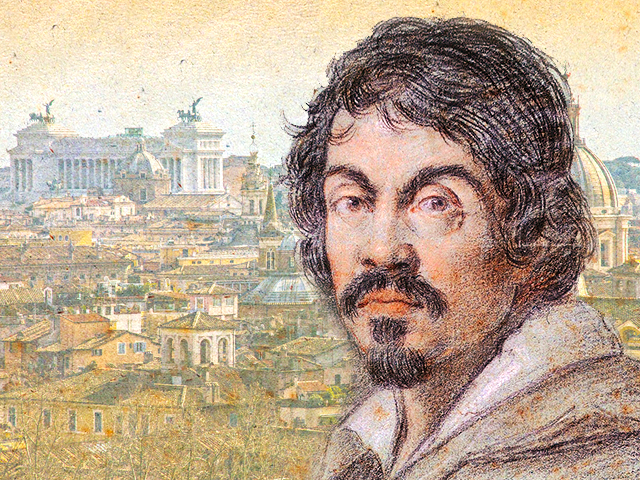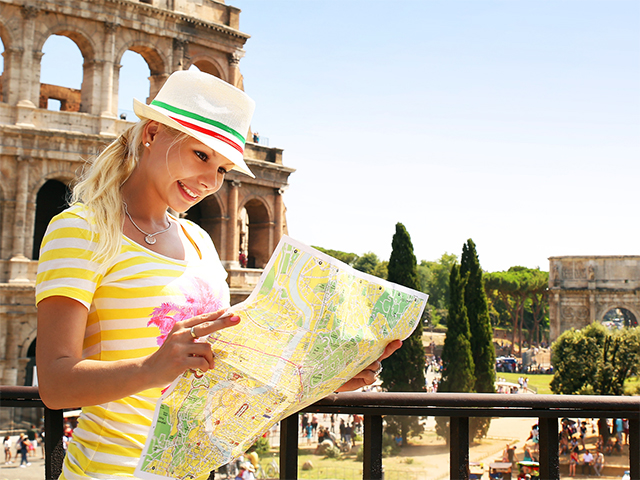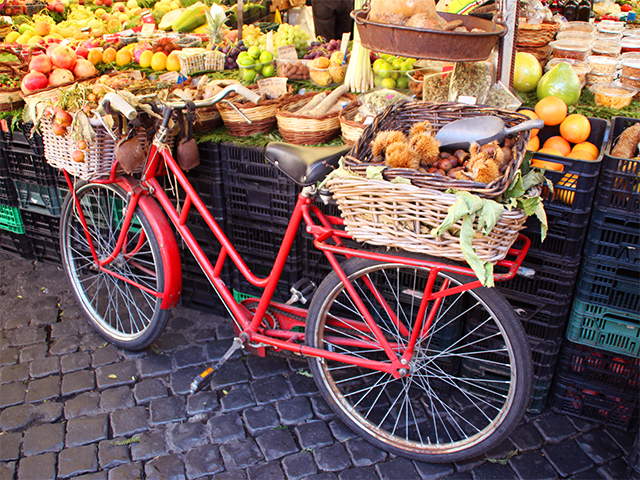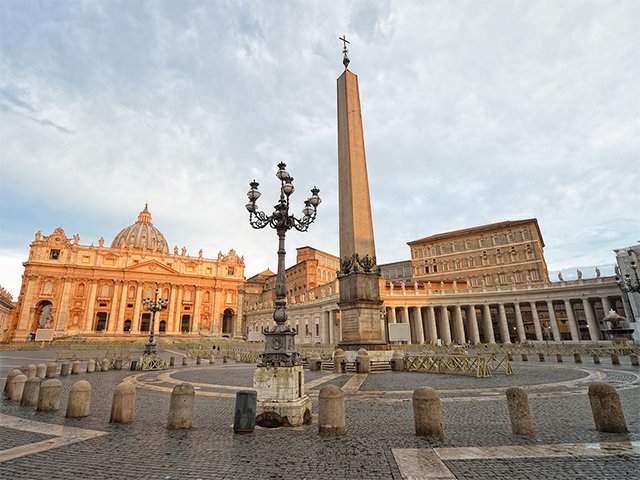Trevi Fountain
Trevi Fountain: location, how to get there, history, news and description of this romantic symbol of Italy in the world.The Trevi Fountain certainly needs no introduction! This splendid fountain, well-known thanks to Fellini's Dolce Vita, is beyond doubt one of Rome's most visited spots. Art, history, romanticism and mystery blend in a simply unique work!
Every day tourists from all over the world mill around to admire it, take some pictures as a souvenir and to toss a coin into the fountain, as established by tradition.
Are you ready to discover everything about this incredible fountain that after long restoration works, on November, 3 2015 finally shines again and has its basin filled with water again?
Keep reading this article and we will disclose how to make your visit unforgettable and also how to toss the coin into the fountain to make your dreams come true!
TREVI FOUNTAIN: A LITTLE BIT OF HISTORY
The history of the Trevi Fountain is tightly linked to the history of the Roman Acqueduct Acqua Virgo, comissioned by consul Agrippa to supply water to the thermal baths near the Pantheon. According to a legend, the source of the water was pointed to some soldiers by a young girl (in latin virgo). Hence the the name of the acqueduct.
This important acqueduct is the oldest in Rome and, despite being seriously damaged after a Goth's attack in 537 BC, it kept working for the whole Medieval period until our days. The point where the channel of acqua di virgo ended was located in the East side of the Quirinale, close to an intersection of three roads, a "trivium". In the middle of this crossroads, around 1400, a fountain with three mouths was built, pouring out water into three different basins: from here originates the name of Trevi Fountain.

Piazza di Trevi and the fountain with the same name
Over time both Pope Nicholas V and Pope Urban VIII showed interest in the square with the fountain entrusting respectively Gian Lorenzo Alberti and Bernini the works. However, the actual aspect of the square is due to Pope Clement XII.
In fact, the latest, organised a public contest in 1732 in which all great artists of the time participated, like Luigi Vanvitelli, Ferdinando Fuga, Pietro Bracci, Nicola Salvi and others. All the projects were considered to expensive, except the one presented by Nicola Salvi, who was awarded the commission in September. The total amount allocated to build the fountain was 177.000 ecu!
The works started inmediately, but they were suspended many times and the fountain was not finished until 1762, eleven years after Salvi died, lead by Giuseppe Pannini.
TREVI FOUNTAIN: DESCRIPTION
The amazing baroque construction, an architectural, cultural and engineering masterpiece is located on the small side of Palazzo Poli and it has naturally become a part of it. The whole composition is focused on sea themes.
In the centre dominates the figure of Oceanus, on a shell-like carriage dragged by sea-horses guided by Tritons. At the feet of the central group there are rocks and petrified vegetation placed on the base of Palazzo Poli while on the sides of the central niche there are two pairs of Corintian columns containing the statues representing Healthiness and Prosperity.
The two horses, on the other hand, ideally represent a stormy sea (on the left) and a calm sea (on the right) while the two panels in bas relief two both sides of the main arch, instead, represent Agrippa in the act of aproving the building of the acqueduct and the virgin showing the soldiers the source of the water.
Finally, the four big Corintian columns support the superior façade, where can be found respectively, four smaller allegorical statues: from left to right, Abundance of Fruit, Fertility of the Fields, Prosperity of Autumn and Pleasantness of the Gardens. In the middle, between the two central statues, surmounted by an imposing heraldic coat of arms of Pope Clement XII there is the big commemorative inscription.
It must be said that, even though the overall project was made by Nicola Salvi, the whole complex is the result of the work by many artists who have contributed each to build a part of the work. So, the group of Ocean including the statues of the tritons and the horses are attributed to Giovan Battista Maini and Pietro Bracci, the statues of Healthiness and Abundance to Filippo della Valle, the bas relieves to Giovan Battista Grossi and Andrea Bergondi.
That's what they mean when they say that unity is strenght!

Trevi Fountain- Particulars of the fountain
FROM TOSSING COINS TO LA DOLCE VITA
In the collective imagination, the Trevi Fountain represents an authentic symbol of the Eternal City and the Italian art.
The cinema has commemorated the fountain many times, contributing to make it increasingly famous worldwide. The sequence from La Dolce Vita by Federico Fellini (1960) in which provocative Anita Ekberg plunges into the basin, inviting Marcello Mastroianni to do the same is unforgettable.
Or the very funny scene by Italian movie Tototruffa 62 (1961) where Antonio De Curtis, name of art Totò, manages to sell the fountain to an unaware tourist for 500,000 liras and the copyright for all pictures taken by other tourists, creating a series of hilarious gags.

Trevi Fountain with Anita Ekberg and Marcello Mastroianni in the famous scene of La Dolce Vita by Federico Fellini
What you are probably wondering now is why people throw coins into the Trevi Fountain? What is the meaning of this tradition?
There are many anecdotes and legends linked to this unique ritual. Popular Roman tradition has it that if you wish to go back to Roma, you only need to throw a coin with your left hand, with your back to the fountain, your eyes closed and your right hand on your left shoulder. Your return to the Eternal City is guaranteed!
Instead, another leggend says that tossing three coins into the fountain, every coin will grant you a wish: the first is related to you going back to Rome; the second, will make you find the love of your life and the third will make your wish of getting marry come true!
So, before emptying your pockets, think wisely about how many coins you are going to throw!
Joking aside, don't think about it too much. You should also know that with your action you are making a good work. In fact, a municipal decree has established that all coins retrieved from the Trevi Fountain will be donated to Caritas, an organisation that supports and assists the poor and the homeless.
RESTORATION OF THE TREVI FOUNTAIN
On June 4, 2014 started some new restoration works of the Trevi Fountain and they have been finally completed on November, 3 2015. This has been an innovative project during which it has been possible to admire the famous fountain as it had never been seen before. In fact, a suspended walkway over the big basin has allowed millions of tourists to get closer and admire the details of the fountain while under construction.
A website was specially created for the restoration intervention and also an App for Smartphones thanks to which visitors were able to take a selfie within a maximum distance of 200 meters. Sending your picture, you would receive a customised poster of the Trevi fountain. Also thanks to the app it was possible to toss a virtual coin into the fountain!
In order to guarantee that the Fountain and the works during restoration can be seen, the construction site could be visited for free thanks to a suspended walkway at specific times. Read the box at the botton of the page to discover the opening hours and further useful information.
The article ends here. And you, how many coins have you tossed? If you have visited the fountain and liked this post, share it with your friends and as usual... bon voyage!
Useful information
Trevi Fountain
- HOW TO GET THERE
Trevi Fountain is right in the historical cener, so it is unconceivable to get there by private transport.
- From the Port of Civitavecchia: go to Civitavecchia Train Station and get on the first train bound for Rome. After about one-hour trip, get off at Roma Termini Station and get the metro (line A) towards Battistini and after two stops get off at Barberini - Fontana di Trevi. Sontinue by walk along Via del Tritone until Via della Stamperia that leads to Piazza di Trevi. Alternatively, from Termini you can take bus lines 175 or 492 and get off at the stop Tritone/Fontana di Trevi.
- TIMETABLES
- It can always be visited.
- PRICES
Free visit.



 PORT MOBILITY CIVITAVECCHIA
PORT MOBILITY CIVITAVECCHIA


















